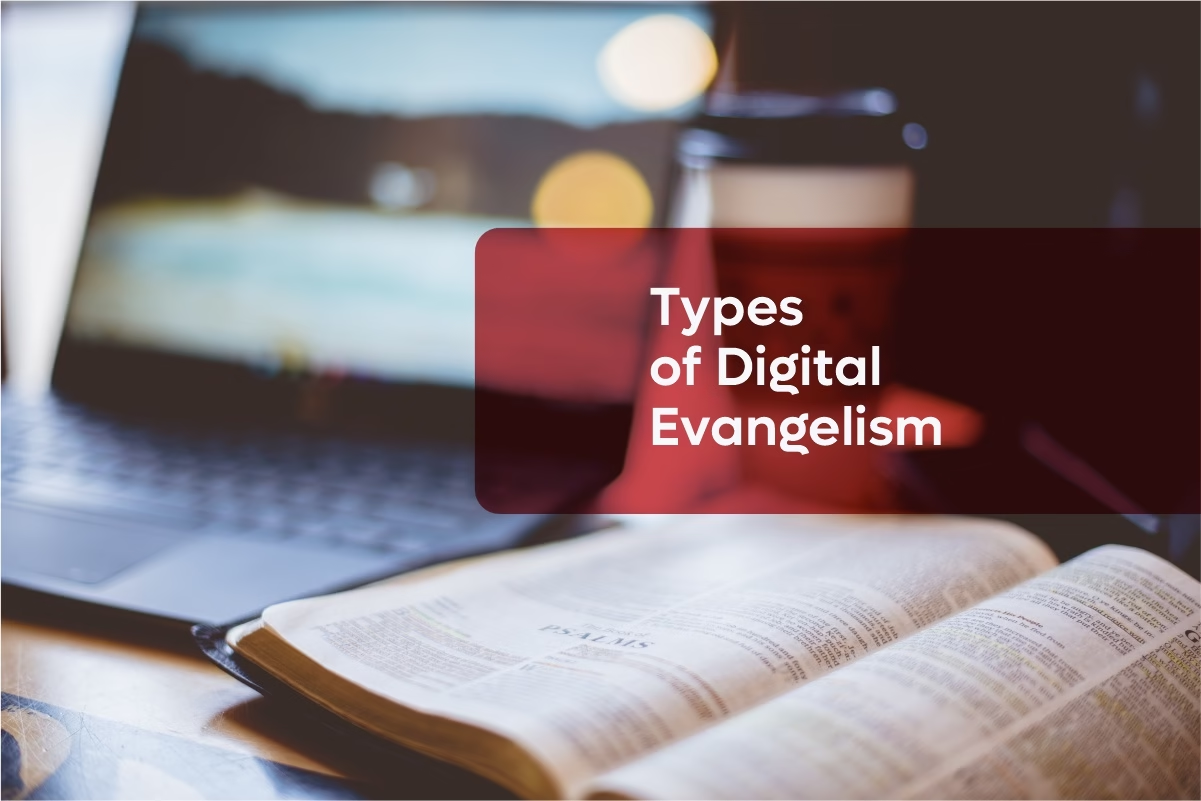When God first called me into digital ministry, digital evangelism was where everything began. It was my favorite part of ministry, and honestly, it still is today.
There was something incredibly powerful about seeing how technology could break down geographical barriers and reach people who might never walk through church doors.
Eventually, God expanded my vision beyond digital evangelism alone. He led me to explore digital discipleship, content ministry, digital church, digital mission and now emerging technologies like AI, VR, and AR. But digital evangelism remains the foundation of everything I teach about ministry in the digital age.
What is Digital Evangelism?
Digital evangelism is the intentional and strategic use of digital tools, technologies, and platforms to share the Gospel of Jesus Christ.
It’s not simply about putting sermons online or having a church website. True digital evangelism requires both intention and a strategic approach. We must be purposeful about reaching people where they already spend their time online, and we must be strategic in how we present the Gospel in ways that resonate in digital spaces.
The beauty of digital evangelism lies in its accessibility and reach. A single post, video, or conversation can impact someone on the other side of the world.
Digital platforms allow us to meet people in their moments of searching, questioning, and seeking. Whether someone is scrolling through social media at 2 AM looking for hope, or searching on Google for answers to deep spiritual questions, digital evangelism creates opportunities to point them toward Christ.
Digital evangelism also breaks down traditional barriers. People who might feel intimidated by church buildings, who live in areas without Christian communities, or who are exploring faith privately can encounter the Gospel through digital means. It’s mission work that happens 24/7, reaching across every border and time zone.
Now, let me walk you through ten distinct expressions of digital evangelism, each with unique approaches, strategies, and opportunities for impact.
1. Personal Digital Evangelism
Personal digital evangelism connects with people individually through digital platforms. This is often the easiest entry point because it mirrors natural online conversations with added intentionality.
Personal digital evangelism can happen in three primary ways.
First, you can start a conversation with someone with the specific intention of sharing the Gospel, even if the conversation doesn’t immediately begin with spiritual topics. You might comment on someone’s post about their struggles at work, offer encouragement, and as the conversation develops, naturally transition into sharing how your faith provides hope and perspective.
Second, when you’ve already established an ongoing conversation and recognize that the person needs Christ, you can intentionally redirect the dialogue toward spiritual matters. Perhaps you’ve been messaging a friend about their relationship struggles. As trust builds, you can gently introduce how Christ offers healing and restoration in ways that human effort alone cannot achieve.
Third, you can intentionally invite people into gospel conversations through content on social media. You might share your testimony through Instagram stories, post a thought-provoking question about faith on Twitter, or create a Facebook post about how God answered a specific prayer. These content pieces serve as conversation starters that invite responses.
The key is approaching it as a personal witness rather than broadcasting. For example, noticing a friend posting about hopelessness, sending a caring message, and naturally sharing how Christ provides hope during struggles. Or posting an authentic Instagram story about answered prayer that prompts someone to ask questions about faith.
2. Church Led Digital Evangelism
Church led digital evangelism represents organized, coordinated outreach online. COVID-19 changed how churches view digital spaces, but many stopped at livestreaming for existing members rather than using it evangelistically.
But forward-thinking churches have embraced church led digital evangelism that specifically targets their communities to win people to Christ. Some churches maintain websites where they answer life-applicable questions in an evangelistic manner. Others run active social media accounts that go beyond content creation to actively offer people the hope we have in Christ.
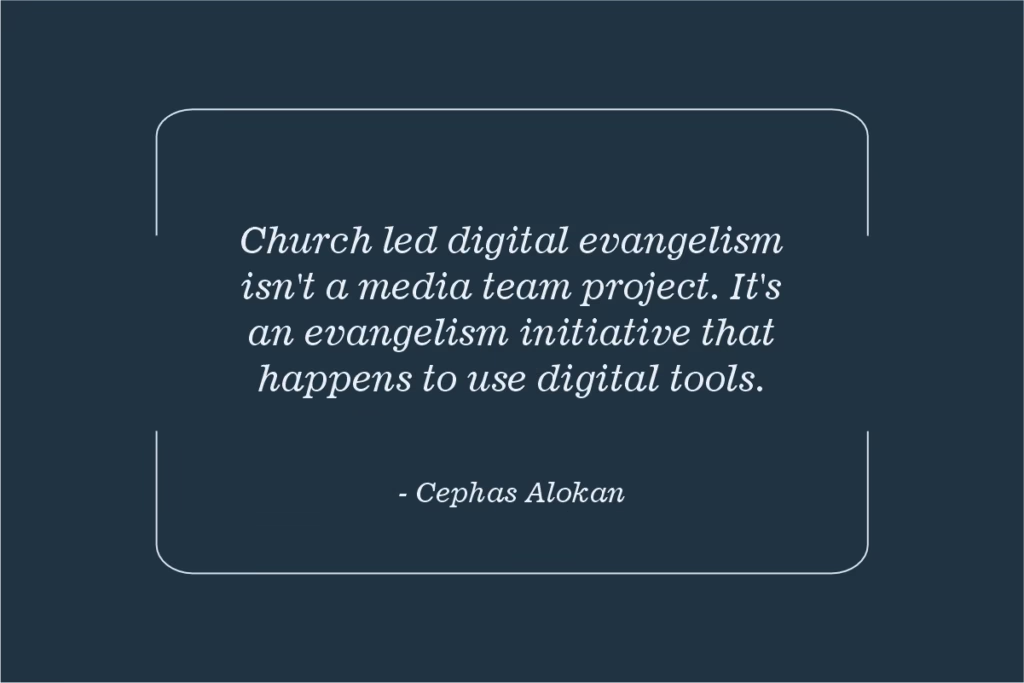
One critical mistake churches make with church led digital evangelism is assuming the church media team should lead this initiative. Media teams are skilled in production, technical execution, and content creation, but evangelism requires a different skillset and calling. Digital evangelism should be led by the evangelism ministry or team, people with hearts and gifts for reaching the lost.
What’s needed is training the evangelism team to use digital methods effectively, then partnering them with the church media team or digital ministry team. The evangelism leaders provide the strategy and gospel focus, while the media team provides technical support and production quality. This partnership creates powerful, effective church led digital evangelism that actually reaches people for Christ rather than just creating content.
3. Media Based Digital Evangelism
I once watched a movie, maybe “God’s Not Dead,” where the producer included a call to action at the end, inviting viewers who wanted to follow Christ to visit a website. That’s media based digital evangelism in action.
This approach encompasses movies, music, podcasts, and other media forms that carry the Gospel message and provide clear pathways for response. African gospel movies like “Abattoir” and “Abejoye,” alongside American Christian films such as “The Passion of the Christ,” “God’s Not Dead,” and “I Can Only Imagine,” have reached millions of viewers, many of whom might never set foot in a church building.
Many viewers aren’t Christians, some identify as Muslim, others are finding their way back to faith.
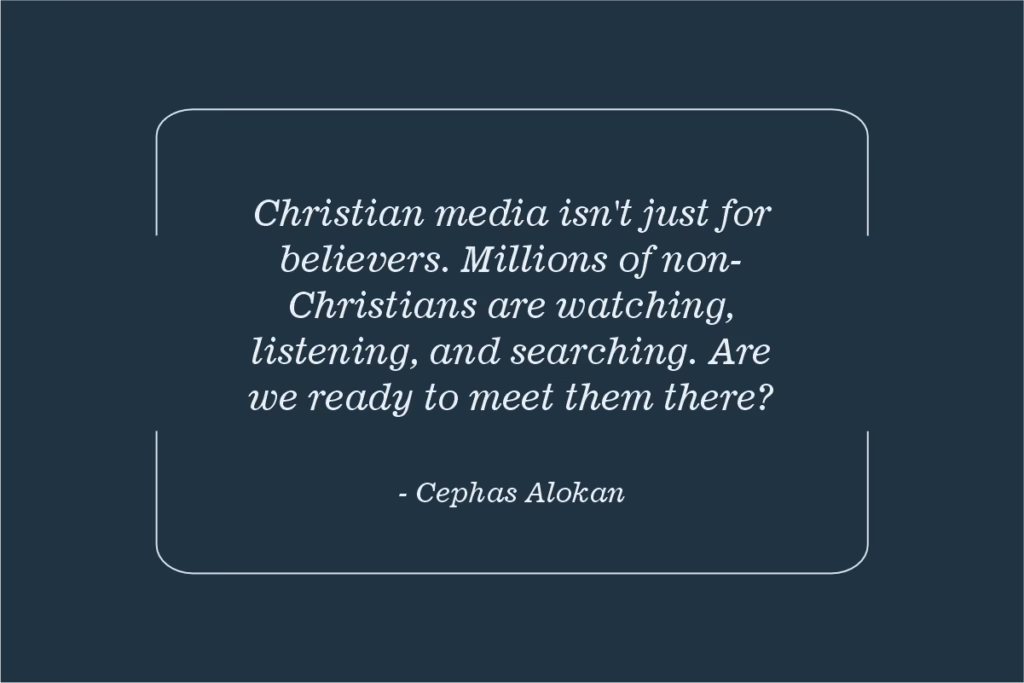
Strategically positioning media with clear pathways for response creates massive impact. QR codes in film credits, testimony videos in album rollouts, and salvation links in podcast descriptions capture moments when hearts are stirred.
4. Content Based Digital Evangelism
Content based digital evangelism answers questions people actively search for online. Millions of faith-related queries happen monthly: “how to pray,” “does God exist,” “how to find purpose.” These seekers need biblical answers.

Blog and Search Strategy: Creating SEO-optimized content like “5 Ways to Experience God’s Peace During Anxiety” meets people searching for spiritual solutions while introducing them to the Gospel.
Video and YouTube: As the second largest search engine, YouTube reaches people seeking visual explanations. Videos answering questions like “What Christians Actually Believe About Heaven” reach those with misconceptions about faith.
Social Media Content: Instagram carousels, TikTok videos, and Facebook posts create touchpoints with the Gospel through consistent, valuable content that naturally points toward Christ.
5. Interactive Digital Evangelism
Interactive digital evangelism centers on two-way conversations rather than broadcasting. It addresses specific questions in real time through live Q&A sessions on Instagram or YouTube, chatbots on church websites providing 24/7 answers, and online Bible studies through Zoom.
For example, monthly Instagram Live “Faith Questions Unplugged” sessions where people submit questions anonymously, or “Text Your Questions” campaigns with trained volunteers responding personally. Even thoughtful comment section engagement turns digital spaces into evangelistic opportunities.
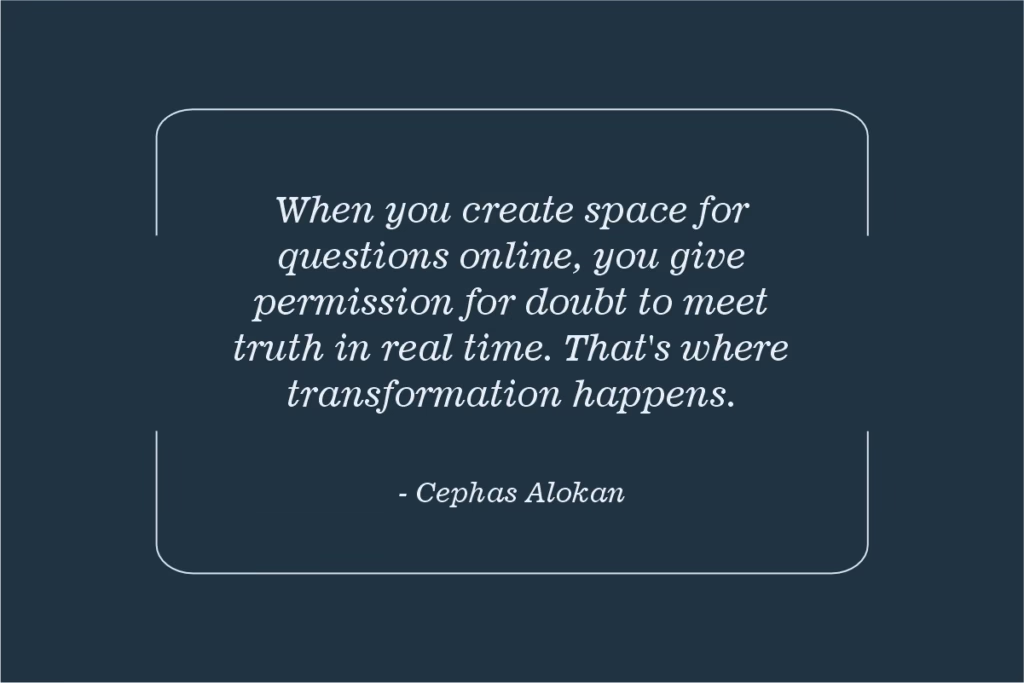
6. Community Digital Evangelism
Community digital evangelism brings people into digital spaces for spiritual conversations. These communities don’t necessarily advertise as spiritual initially, but conversations become enriched with kingdom values pointing toward the Gospel.
Using WhatsApp groups, Telegram channels, Discord servers, or Facebook Groups, you might create a business tips group for entrepreneurs that evolves into a prayer community. Or a parenting advice group grounded in biblical wisdom. Or a gaming Discord where believers create welcoming communities and spiritual conversations happen organically.
The key is providing genuine value while creating a culture where spiritual conversations are natural, never feeling like bait and switch.
7. Marketplace Digital Evangelism
Marketplace digital evangelism integrates faith into professional endeavors. Digital platforms have exponentially expanded how professionals bring faith into work contexts.
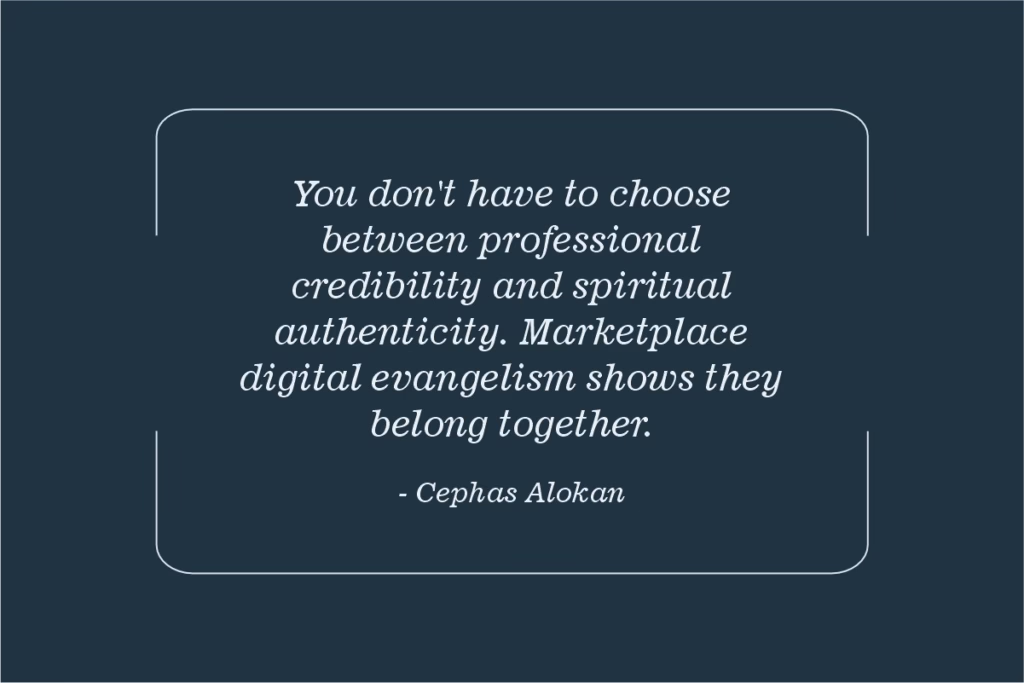
Strategies include building LinkedIn brands openly integrating faith with expertise, creating industry podcasts occasionally addressing faith perspectives, and writing articles incorporating Christian values. A real estate agent sharing home buying tips while occasionally posting how faith shapes her client service. A software developer teaching coding while sharing how Christianity motivates ethical technology creation.
This works because people respect professional expertise and become open to hearing what drives that excellence.
8. Apologetics Digital Evangelism
Apologetics digital evangelism addresses intellectual questions and objections about Christianity. Many have genuine barriers to faith: questions about science, suffering, biblical reliability, or other religions.
Create YouTube channels answering tough questions, write blog posts addressing common objections, engage respectfully in forums like Reddit, and develop social media content explaining concepts like “3 Reasons Historians Trust the Gospel Accounts.”
This is particularly effective for younger generations with immediate access to anti-Christian content, ensuring they encounter thoughtful Christian responses to hard questions.

9. Missional Technology Projects
Missional technology projects leverage technology to solve problems while creating gospel opportunities. By creating apps, websites, and platforms genuinely serving people, ministries reach populations traditional evangelism might miss.
Bible apps represent the most successful category of missional technology projects. Applications like YouVersion Bible have been downloaded over 500 million times, providing scripture access in hundreds of languages to users across every continent. These apps often include features like reading plans, devotionals, audio versions, and social sharing capabilities that extend their evangelistic impact beyond individual use.
Prayer apps and devotional platforms create additional touchpoints for spiritual engagement. Applications like “Pray as You Go,” “She Reads Truth,” and “Our Daily Bread” provide structured spiritual content that helps both believers and seekers develop consistent spiritual practices. Many of these apps include community features that enable users to share prayer requests, discuss devotional content, and build relationships with other users.
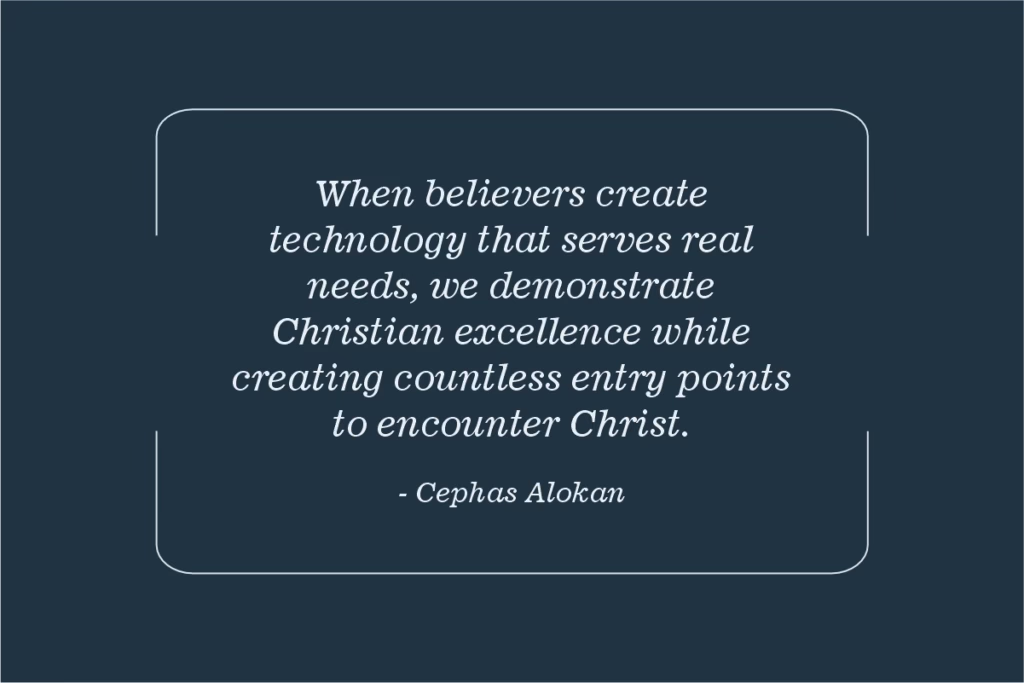
These require significant investment but can serve millions globally with minimal ongoing cost per user, demonstrating Christian innovation while creating countless gospel entry points.
10. Hybrid Evangelism
Hybrid evangelism bridges digital and physical spaces, recognizing lives aren’t divided into online and offline categories. Use digital platforms to promote physical events reaching beyond the existing community. Deploy QR codes at locations connecting people with digital resources. Create digital small groups meeting occasionally in person. Livestream physical events with interactive elements for online participants.
A ministry might host conferences with both in-person and virtual options, complete with digital networking and interactive Q&A. Or plant “digital missionaries” building online communities that organize local meetups for geographic clusters.
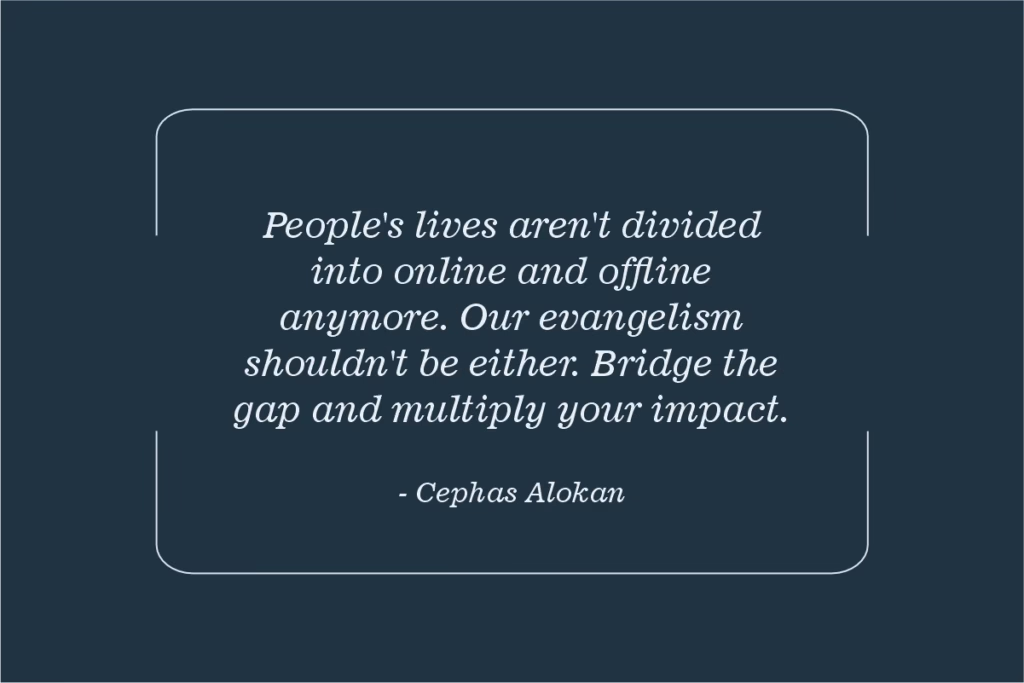
Going Deeper with Digital Evangelism
What you’ve read here is just the tip of the iceberg. Each of these ten types of digital evangelism deserves much deeper exploration, and that’s exactly what I’ll be doing on this website.
In upcoming posts, I’ll dive into each type individually, unpacking practical strategies, real-world case studies, step-by-step implementation guides, and common mistakes to avoid.
You’ll learn how to craft compelling content for content based digital evangelism, discover proven frameworks for building thriving online communities, get specific scripts and conversation starters for personal digital evangelism, understand the technical aspects of launching missional technology projects, and explore advanced strategies for integrating multiple types effectively.
Not Sure Where to Start?
If you’re reading this and feeling overwhelmed about which type of digital evangelism is right for you, you don’t have to figure it out alone. I offer personalized consultation where we can discuss your unique situation, calling, gifts, and context to create a clear roadmap for your digital evangelism journey.
But you can continue reading to find out how to choose an expression suitable for you
Choosing the Right Types of Digital Evangelism
With ten different types of digital evangelism, how do you decide which approaches are right for you? Whether you’re an individual believer wanting to share your faith online, someone called to start a digital evangelism ministry, or a church developing a comprehensive strategy, the good news is you don’t have to choose just one. The most effective digital evangelism combines multiple types working together.
For Individual Believers
If you’re simply wanting to share your faith more intentionally online, start with personal digital evangelism. It requires no special skills, budget, or platform. You can begin today by being more intentional in your existing social media conversations. Share your testimony authentically, respond thoughtfully when friends post about struggles, and create content that naturally reflects your faith.
As you grow comfortable, consider content based digital evangelism by starting a blog or consistent social media presence addressing questions you encounter. If you’re a professional, marketplace digital evangelism allows you to integrate faith into your career conversations online. The key is starting where you already are, with the platforms you already use.
For Those Called to Digital Evangelism Ministry
If you sense God calling you to digital evangelism as a focused ministry, assess your natural gifting first.
- Are you drawn to one-on-one conversations? Focus on personal and interactive digital evangelism.
- Do you love creating content? Build a content based digital evangelism platform through blogging, YouTube, or podcasting.
- Are you passionate about apologetics? Start a channel or blog addressing intellectual objections to faith.
Consider your target audience carefully.
Who is God burdening your heart to reach?
- Skeptics need apologetics digital evangelism.
- Professionals in your industry need marketplace digital evangelism.
- People in crisis need interactive digital evangelism with real-time response.
Your calling often aligns with a specific audience and approach.
Start with one type, build consistency and credibility, then expand strategically. Many successful digital evangelism ministries began with one person creating content consistently for months before seeing significant impact. Patience and faithfulness matter more than sophisticated strategies initially.
For Ministries and Churches
Churches and established ministries can leverage multiple types simultaneously by involving different people and teams. A comprehensive church led digital evangelism strategy might include training all members in personal digital evangelism, developing content based digital evangelism through blogs and videos, hosting monthly interactive digital evangelism Q&A sessions, and supporting members doing marketplace digital evangelism in their professions.
The mistake is trying to do everything at once or letting one team handle all digital evangelism. Instead, identify people within your congregation with different gifts and callings.
Someone passionate about apologetics can lead that effort. Your media-savvy young adults can drive content creation. Business professionals can pioneer marketplace evangelism. Your pastoral team can handle interactive elements like Q&A sessions.
Church led digital evangelism becomes powerful when it’s truly church-wide, not just another program run by staff. Train, equip, and release your people into their unique digital evangelism callings while providing coordination and resources.
Universal Considerations for Everyone
Regardless of whether you’re an individual, ministry founder, or church leader, consider these factors:
- Your Current Strengths: What are you already good at? Strong communicator? Try personal or interactive evangelism. Creative? Focus on content or media based approaches. Tech-savvy? Consider missional technology projects. Start where you have existing capability.
- Your Available Time: Be realistic about commitment. Community digital evangelism requires consistent presence. Missional technology projects demand intensive development. Content creation needs regular output. Choose approaches you can sustain long-term without burning out.
- Your Audience’s Needs: Who are you trying to reach? Young seekers engage differently than professionals or parents. Urban audiences have different questions than rural ones. International audiences need different approaches than local communities. Let your audience shape your strategy.
- Your Passion and Calling: Which types excite you? Where do you sense God’s leading? Sustainable digital evangelism flows from genuine calling, not obligation. If something feels like drudgery, it’s probably not your calling. If something energizes you, lean into it.
Start Small and Build
The biggest mistake in digital evangelism is trying to do too much too soon. Choose one or two types that align with your calling, capacity, and audience. Do them excellently. Learn what works. Adjust based on feedback and results. Then gradually expand.
An individual might start with personal digital evangelism while occasionally creating content. A new ministry might focus solely on content based evangelism for the first year, building an audience before adding interactive elements. A church might begin by training members in personal evangelism while launching one unified content initiative.
Remember these types overlap and reinforce each other.
- Personal digital evangelism becomes more effective when you have quality content to share.
- Content based evangelism creates opportunities for interactive conversations.
- Church led evangelism amplifies individual efforts.
Think strategically about how different approaches can work together in your context.
The goal isn’t doing all ten types. The goal is faithfully doing what God has called you to do, using the gifts He’s given you, to reach the people He’s placed on your heart. Start there, and watch how He multiplies your faithfulness.
The Future of Digital Evangelism
As technology continues evolving at an unprecedented pace, digital evangelism faces both exciting opportunities and significant challenges.
Artificial intelligence promises to personalize spiritual content and provide sophisticated tools for ministry automation, while virtual and augmented reality technologies create immersive experiences that could revolutionize spiritual education and worship.
However, the fundamental principles of effective evangelism remain constant across all technological changes: authentic relationships, clear communication, cultural sensitivity, and genuine care for spiritual seekers.
The most sophisticated digital tools cannot substitute for the human connections and divine intervention that ultimately draw people to faith.
The future of digital evangelism likely lies not in choosing between traditional and technological approaches, but in thoughtfully integrating both to create comprehensive strategies that meet people wherever they are in their spiritual journey. Whether through personal testimony shared on social media, sophisticated mobile applications, or hybrid communities that bridge online and offline worlds, the goal remains the same: sharing the timeless message of hope and redemption through whatever means will most effectively reach contemporary audiences.
As believers navigate this digital landscape, they must balance innovation with wisdom, efficiency with authenticity, and technological capability with relational depth.
The Great Commission remains unchanged, but the methods for fulfilling it continue expanding, offering unprecedented opportunities to share faith with a world that desperately needs hope, purpose, and eternal perspective.
The ten types of digital evangelism outlined here represent current approaches rather than exhaustive possibilities.
As technology evolves and cultural preferences shift, new forms of digital evangelism will undoubtedly emerge. The key is maintaining evangelistic purpose while embracing the tools and platforms that most effectively serve that purpose in each generation and cultural context.
Ultimately, digital evangelism succeeds not through technological sophistication alone, but through the faithful application of these tools by believers who understand both their evangelistic calling and the digital contexts in which they serve. The future belongs to those who can combine ancient truth with contemporary communication, timeless love with timely relevance, and eternal purpose with immediate accessibility.
Want to connect with me to talk more about digital evangelism or digital ministry? Send me a mail


